AO-85(Fox-1A) trace to decode DUV
DUV (Data Under Voice)

Fox-1A successful launch - 8 Oct 2015, 12:49 UTC
http://www.ne.jp/asahi/hamradio/je9pel/foxbison.htm
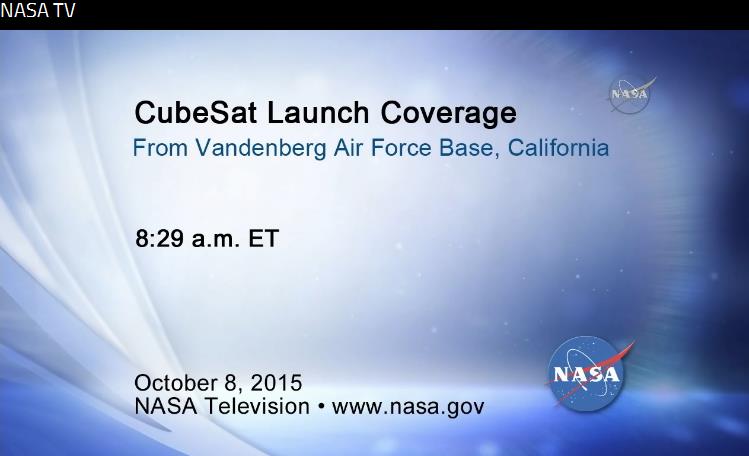
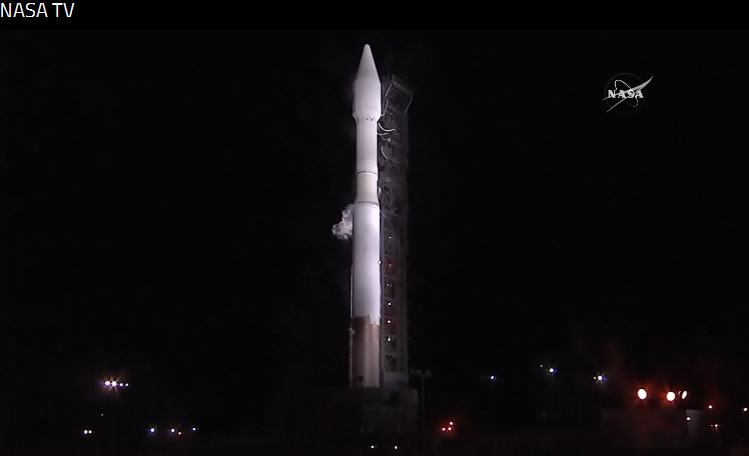
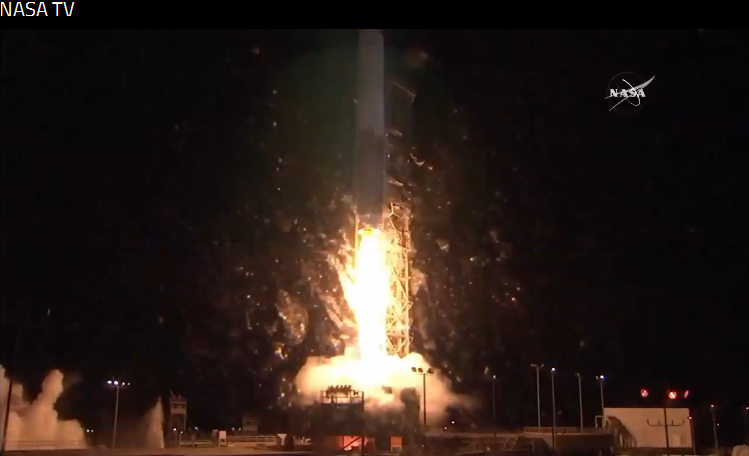
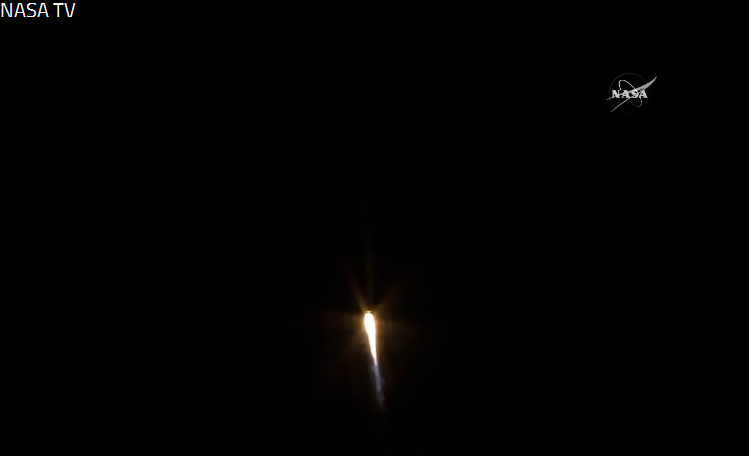 AO-85 Voice recorded - 11 Oct 2015
http://www.ne.jp/asahi/hamradio/je9pel/51011fx4.wav
> Hi this is amateur radio satellite Fox-1.
USB Sound Blaster installed - 25 Nov 2015
It's means to avoid the PC inside of noise at the time of reception,
and purpose the good sound quality pursuit.
AO-85 Voice recorded - 11 Oct 2015
http://www.ne.jp/asahi/hamradio/je9pel/51011fx4.wav
> Hi this is amateur radio satellite Fox-1.
USB Sound Blaster installed - 25 Nov 2015
It's means to avoid the PC inside of noise at the time of reception,
and purpose the good sound quality pursuit.
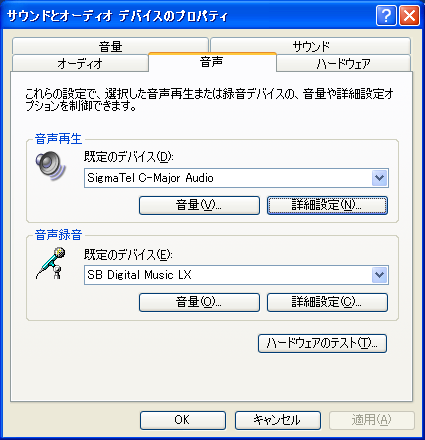
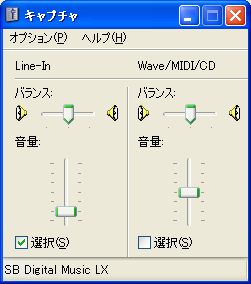
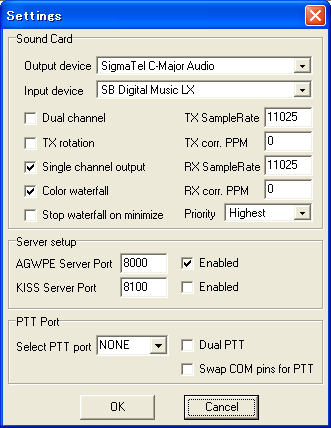
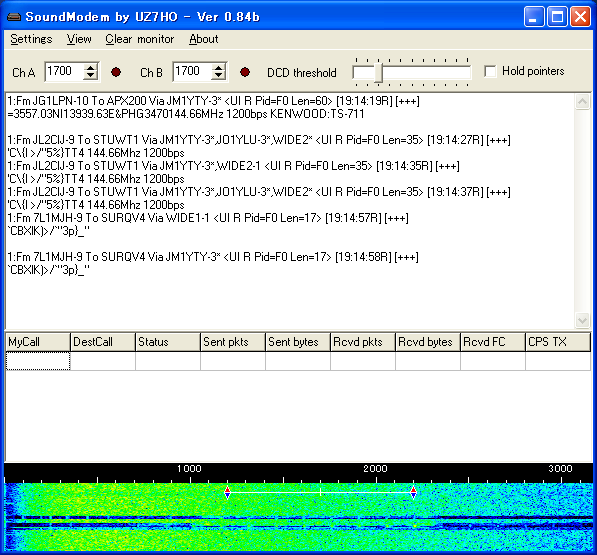
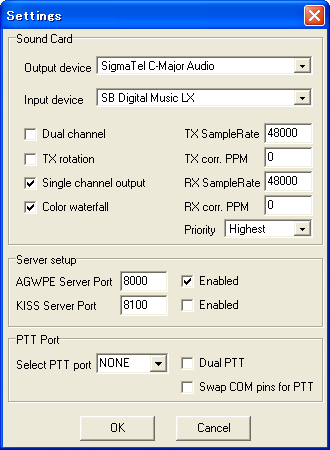
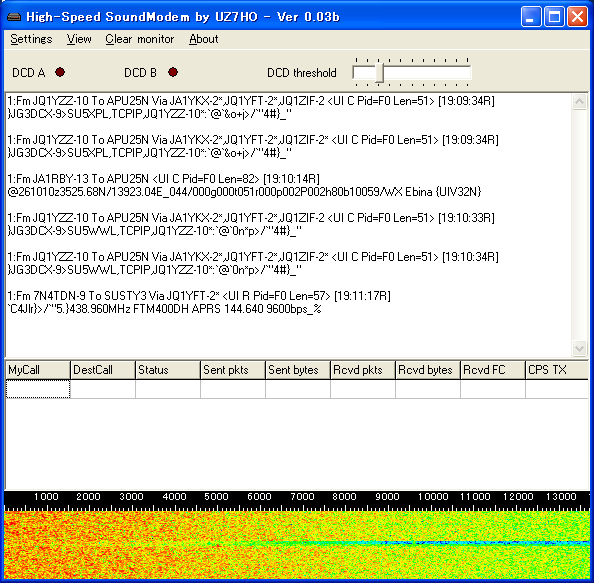 (1) Control Panel -> Sound Audio Device -> Sounds
(2) Sound recording -> Volume -> Select, Line-In
(3) Rig -> Soundmodem -> Settings
(4) View of 144.660MHz 1200bps_APRS [External_SP ON]
(5) Rig -> HS-Soundmodem -> Settings
(6) View of 144.640MHz 9600bps_APRS [Connector Sub] (memo)
UWE-3 using Line-In - 26 Nov 2015
(1) Control Panel -> Sound Audio Device -> Sounds
(2) Sound recording -> Volume -> Select, Line-In
(3) Rig -> Soundmodem -> Settings
(4) View of 144.660MHz 1200bps_APRS [External_SP ON]
(5) Rig -> HS-Soundmodem -> Settings
(6) View of 144.640MHz 9600bps_APRS [Connector Sub] (memo)
UWE-3 using Line-In - 26 Nov 2015
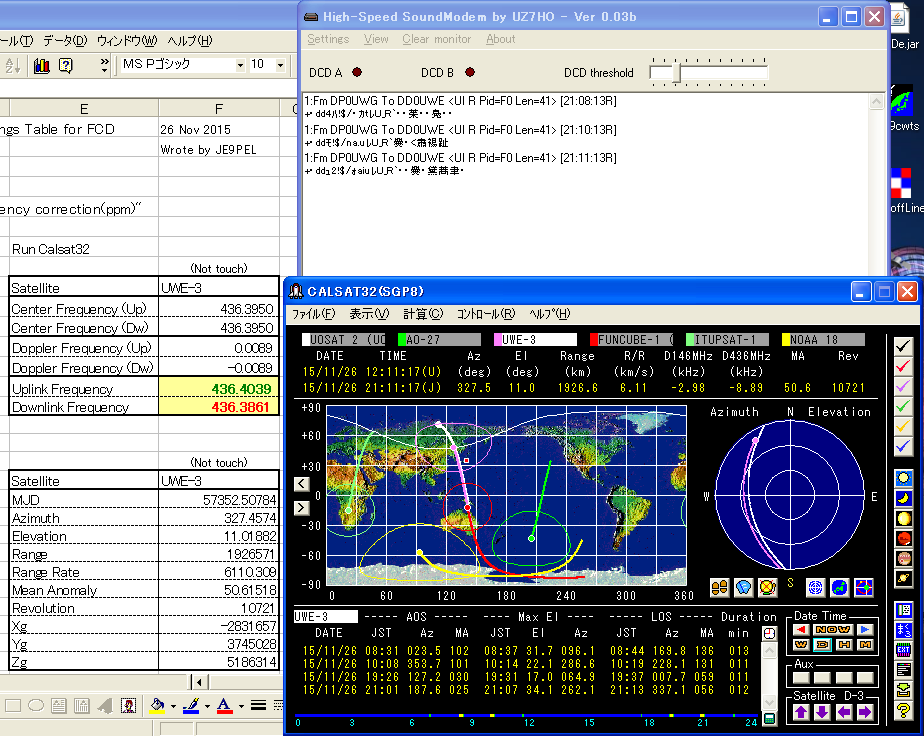 I tried UWE-3 9k6 Line-In reception
using the new Line-In input system
that was introduced in the above.
I tried UWE-3 9k6 Line-In reception
using the new Line-In input system
that was introduced in the above.
AO-85(Fox-1A) finally succeeded in decoding - 29 Nov 2015
I finally succeeded in decoding AO-85(Fox-1) Telemetry. My System is
TS-790S, USB_Sound Blaster, Win_XP, Decoder.
20:46-21:00 UTC, 28 Nov 2015, Ele 62 SW-W-NE, 145.980MHz FM
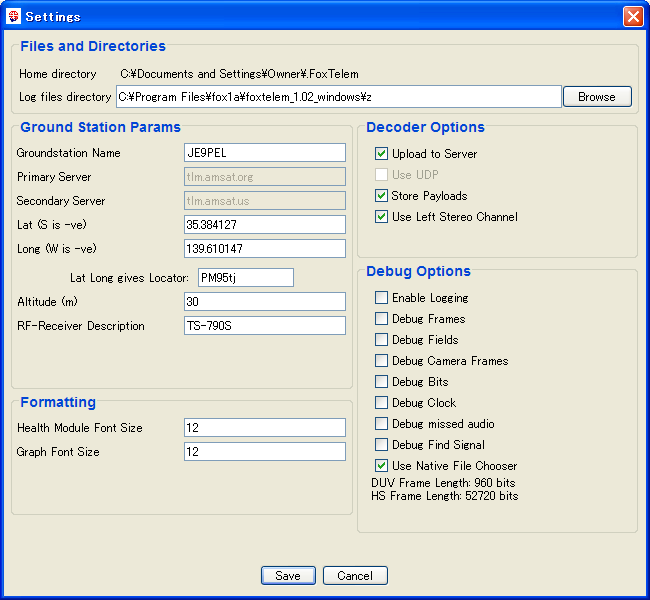
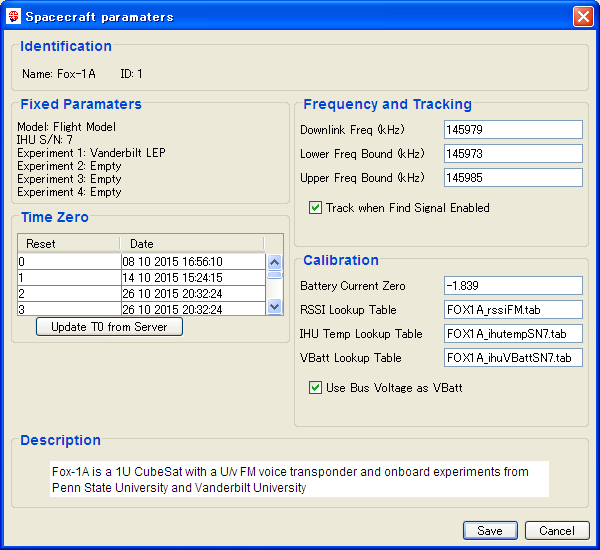
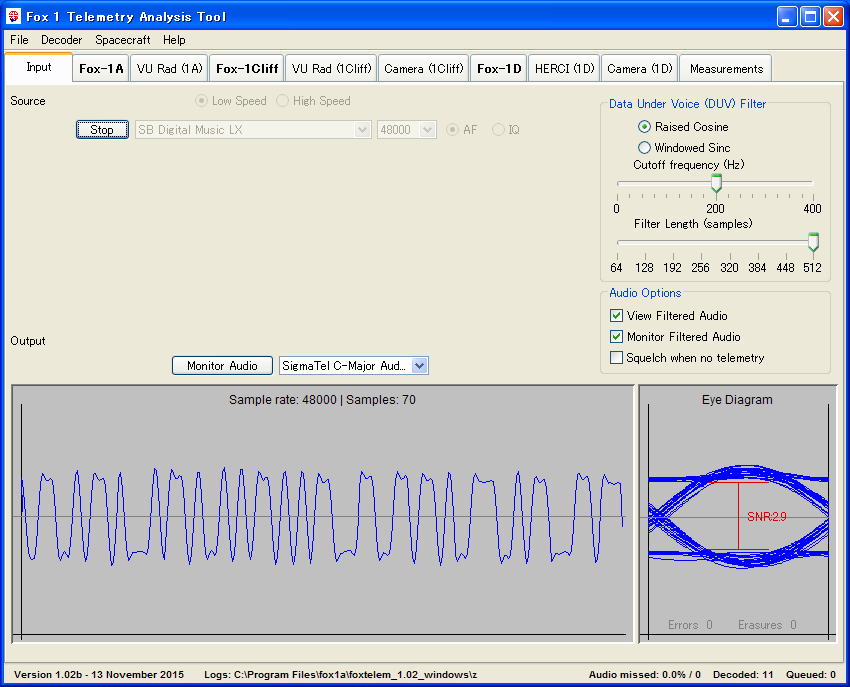
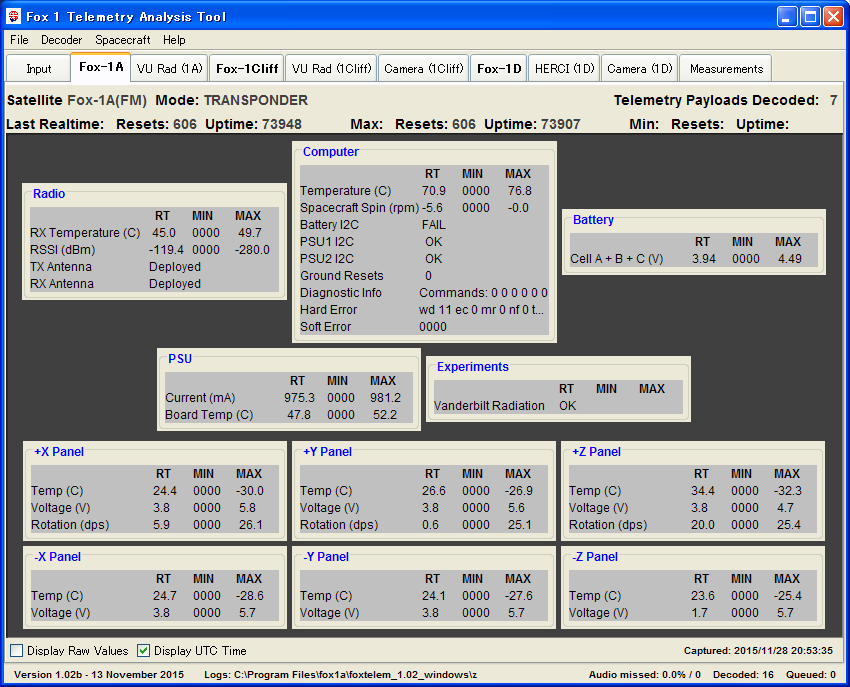
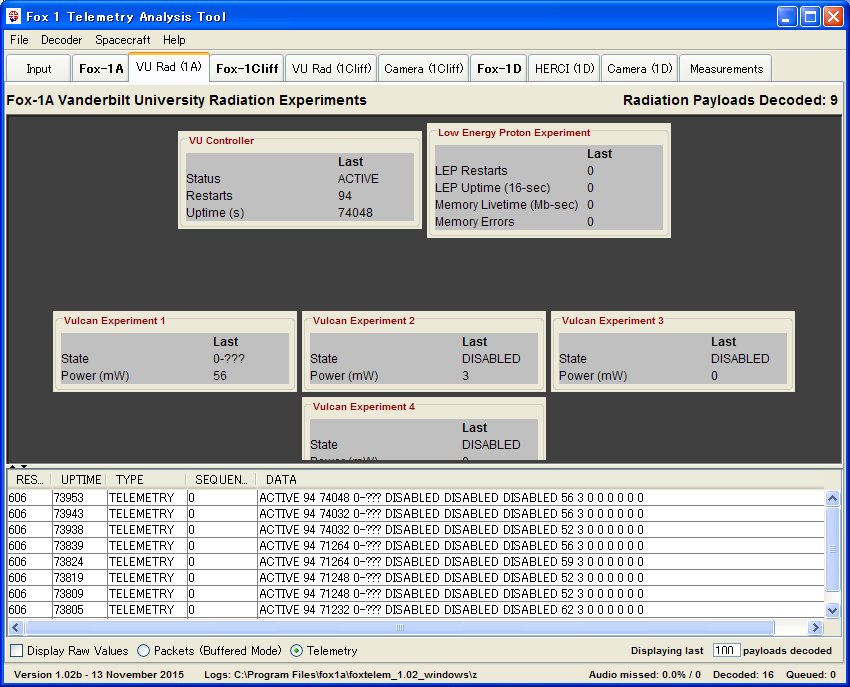
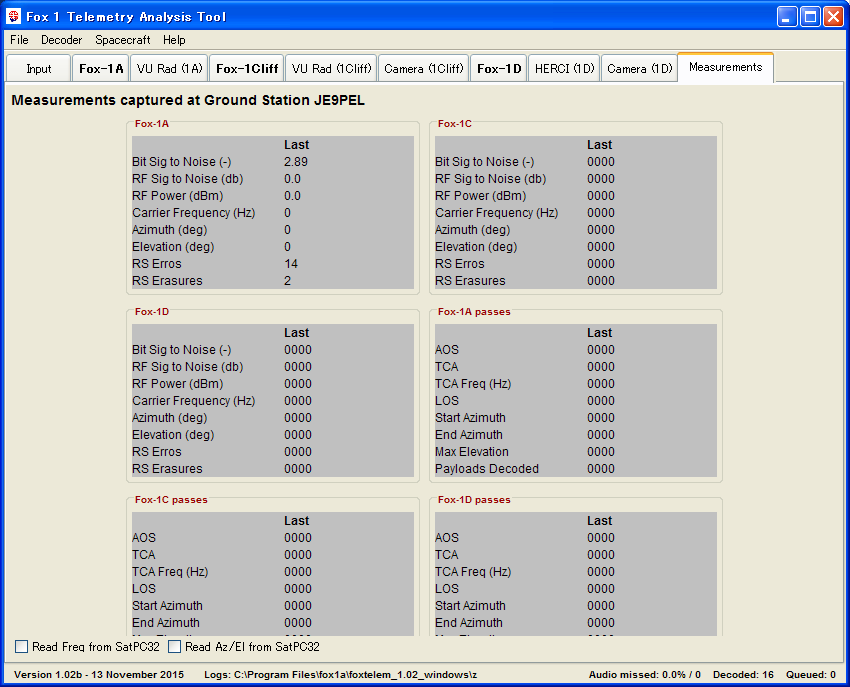
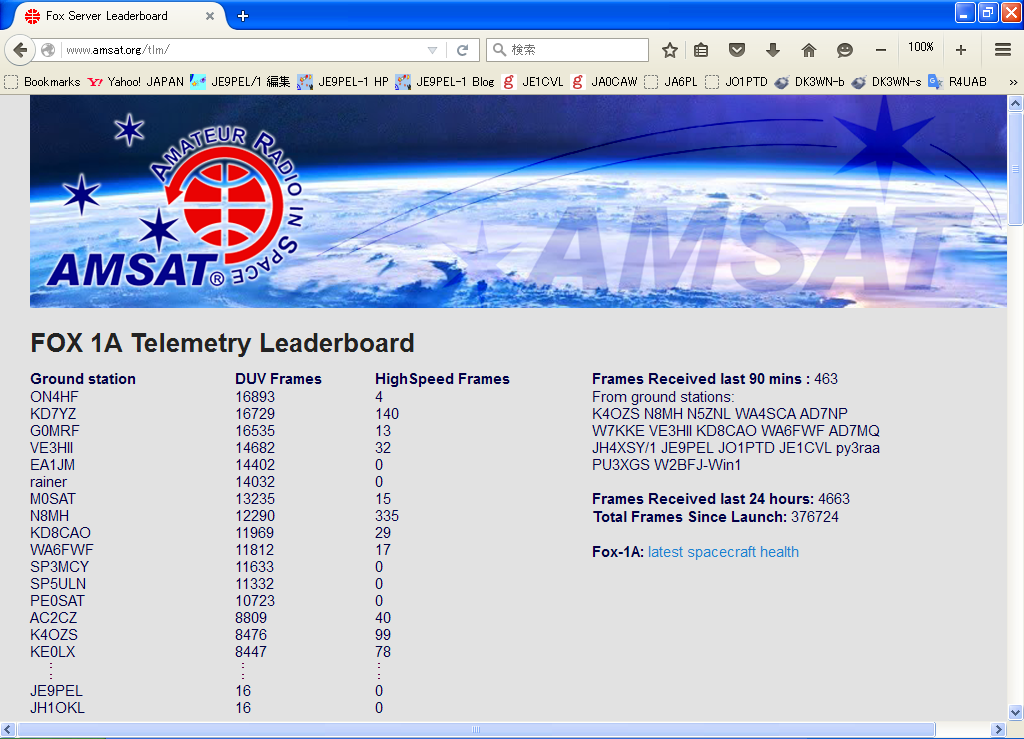
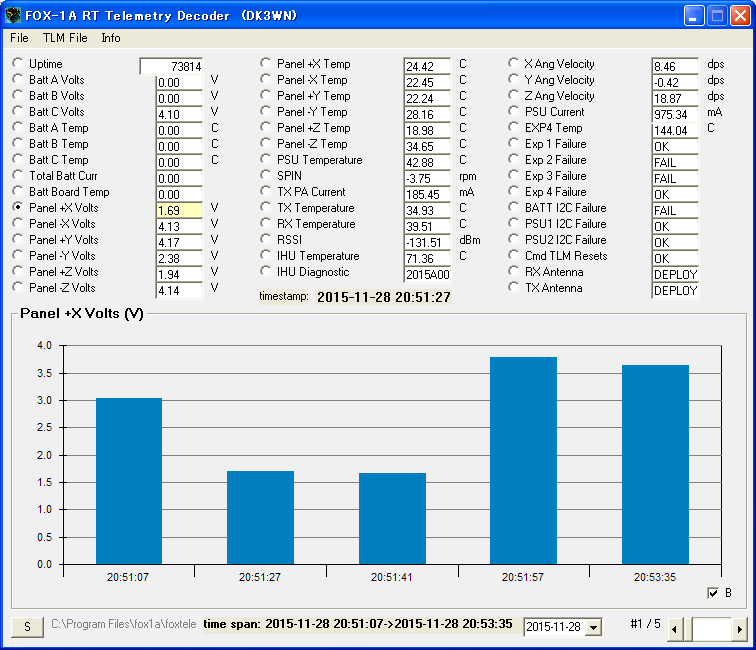 AO-85 in this morning - 30 Nov 2015
06:13-06:27 JST, 30 Nov 2015, Ele 28 SW-W-N, 145.980MHz FM
21:13-21:27 UTC, 29 Nov 2015, Ele 28 SW-W-N, 145.980MHz FM
In this pass, my callsign was placed on the top of the server in the fact that
the most recent reception. Because the other is followed by the callsign of Japan,
South America, and North America, I seen that trajectory of the satellite has been
traced. The eye pattern in the bottom right of the decoder was displayed as the
maximum value SNR = 7.3 and its value was sometimes displayed as SNR = 9.0.
AO-85 in this morning - 30 Nov 2015
06:13-06:27 JST, 30 Nov 2015, Ele 28 SW-W-N, 145.980MHz FM
21:13-21:27 UTC, 29 Nov 2015, Ele 28 SW-W-N, 145.980MHz FM
In this pass, my callsign was placed on the top of the server in the fact that
the most recent reception. Because the other is followed by the callsign of Japan,
South America, and North America, I seen that trajectory of the satellite has been
traced. The eye pattern in the bottom right of the decoder was displayed as the
maximum value SNR = 7.3 and its value was sometimes displayed as SNR = 9.0.
 To clear the count in the decoder,
File -> Delete Payload Files
If necessary, you have to copy txt_file
with the contents to the another folder.
(JE1CVL)
To clear the count in the decoder,
File -> Delete Payload Files
If necessary, you have to copy txt_file
with the contents to the another folder.
(JE1CVL)
[Supplement] Fox-1 satellites include two telemetry formats:
- Slow Speed, also called Data Under Voice (DUV) is 200 bps FSK data sent
at the same time as the transponder audio. Whenever the transmitter is
on, data is being sent. This happens during beacons and during live QSOs.
- High Speed is 9600 bps FSK sent instead of the transponder. This is used
for data intensive experiments such as the Virginia Tech Camera and the
University of Iowa HERCI experiment. This is only active when commanded
from the ground. You can recognize High Speed because it sounds like an
old school computer modem.
- FoxTelem will receive and store both formats assuming you can feed it
audio that does not have the frequencies below 200 Hz filtered.
For High Speed, the audio must also extend to include the full 9600bps
bandwidth of the FM signal. For both modes this is best achieved from
a Software Defined Radio or from the 9600 bps packet port of some radios.
See the user guide for more details.
AO-85 decoded using Software - 18 Dec 2015
I decoded only one frame from AO-85 DUV using Soft-TNC,
RDLSDR(USB) + SDR#1327 + "Fox 1 Telemetry Analysis Tool"
23:00-23:13 UTC, 18 Dec 2015, Ele 17 N-NE-E, 145.980MHz FM
08:55-09:09 UTC, 9 Jan 2016, Ele 53 S-E-EN, 145.980MHz FM
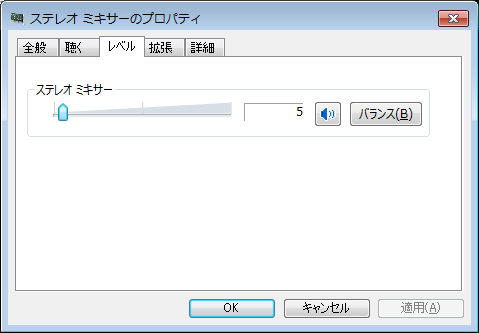
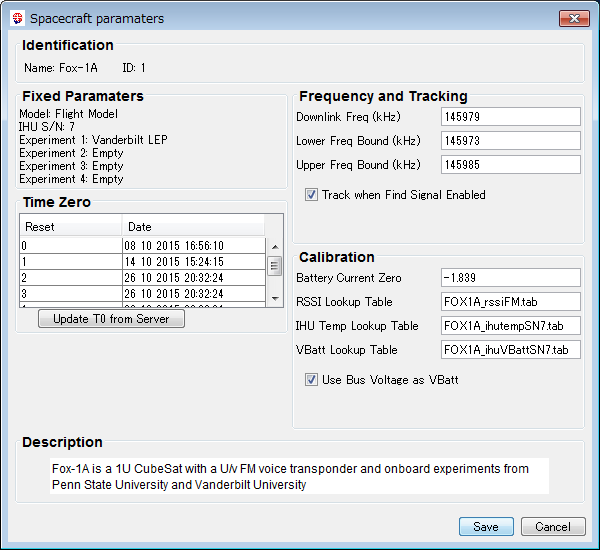
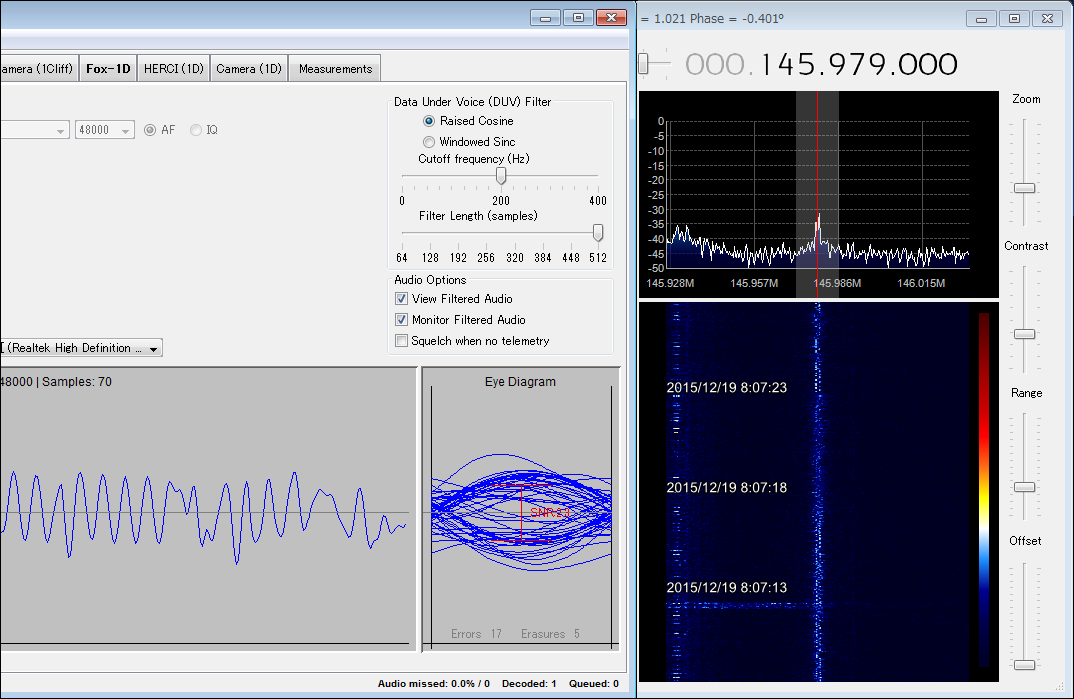
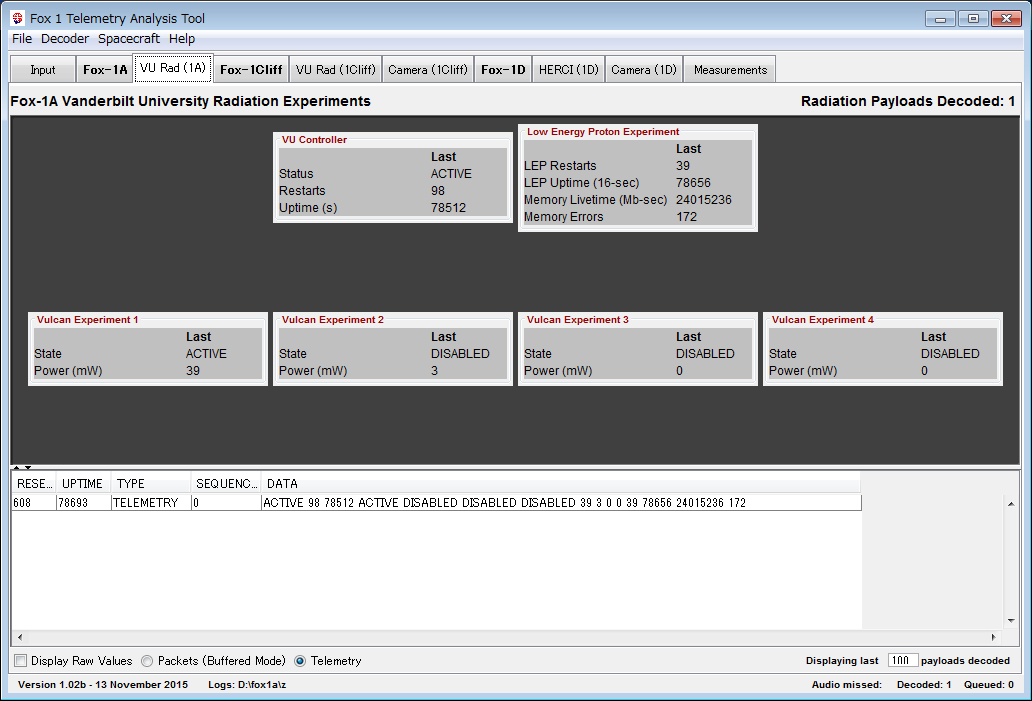
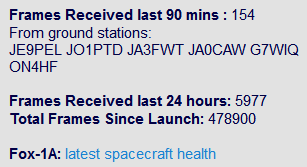
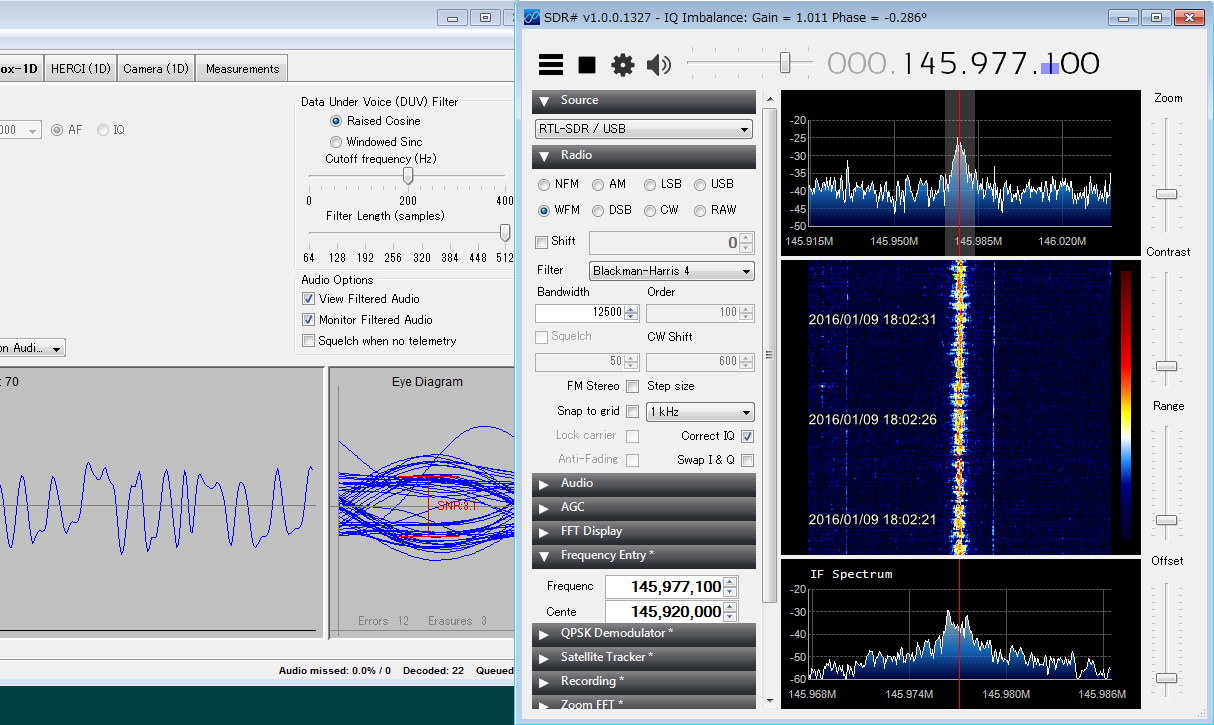 AO-85 DUV - 5 Feb 2016
10:46-11:00 UTC, 5 Feb 2016, Ele 36 WN-N-ES, 145.979MHz WFM
23:11-23:24 UTC, 18 Mar 2016, ELe 27 WN-N-ES, 145.979MHz WFM
I received it using software on 5 Feb 2016, after an interval of one month.
I received 31 data at once. I don't do the strange thing particularly so far.
I noticed later that I might have turned off a preamplifier.
AO-85 DUV - 5 Feb 2016
10:46-11:00 UTC, 5 Feb 2016, Ele 36 WN-N-ES, 145.979MHz WFM
23:11-23:24 UTC, 18 Mar 2016, ELe 27 WN-N-ES, 145.979MHz WFM
I received it using software on 5 Feb 2016, after an interval of one month.
I received 31 data at once. I don't do the strange thing particularly so far.
I noticed later that I might have turned off a preamplifier.
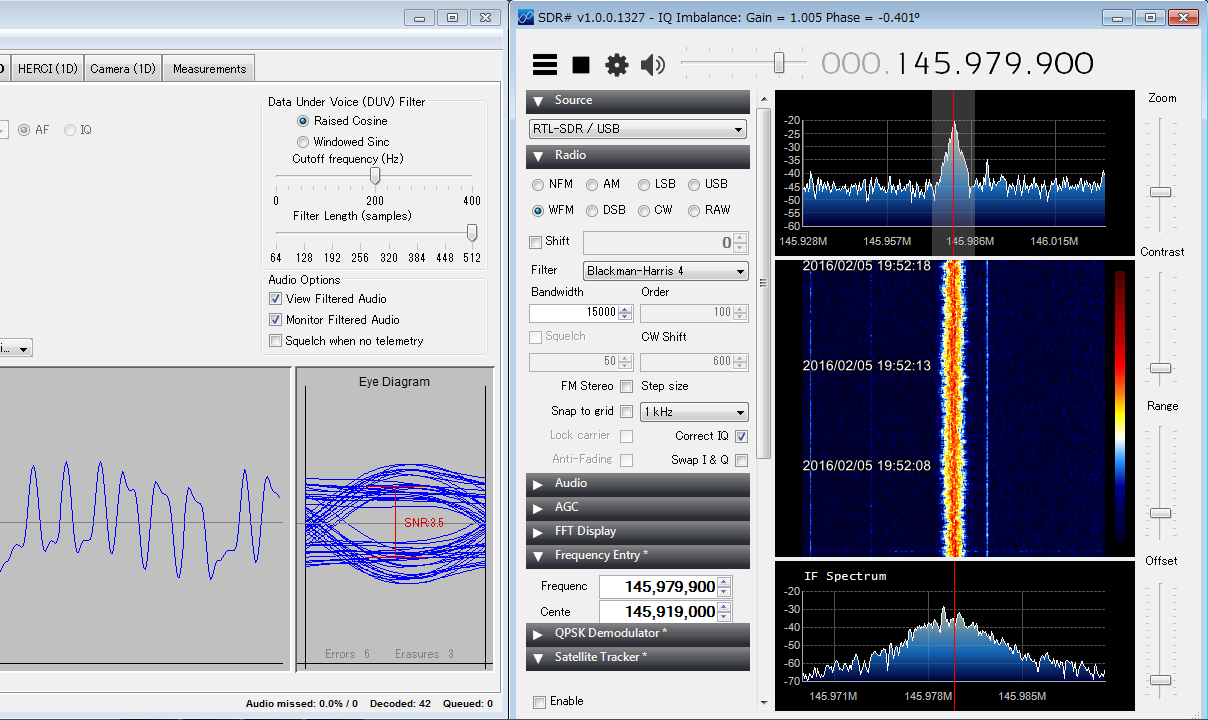
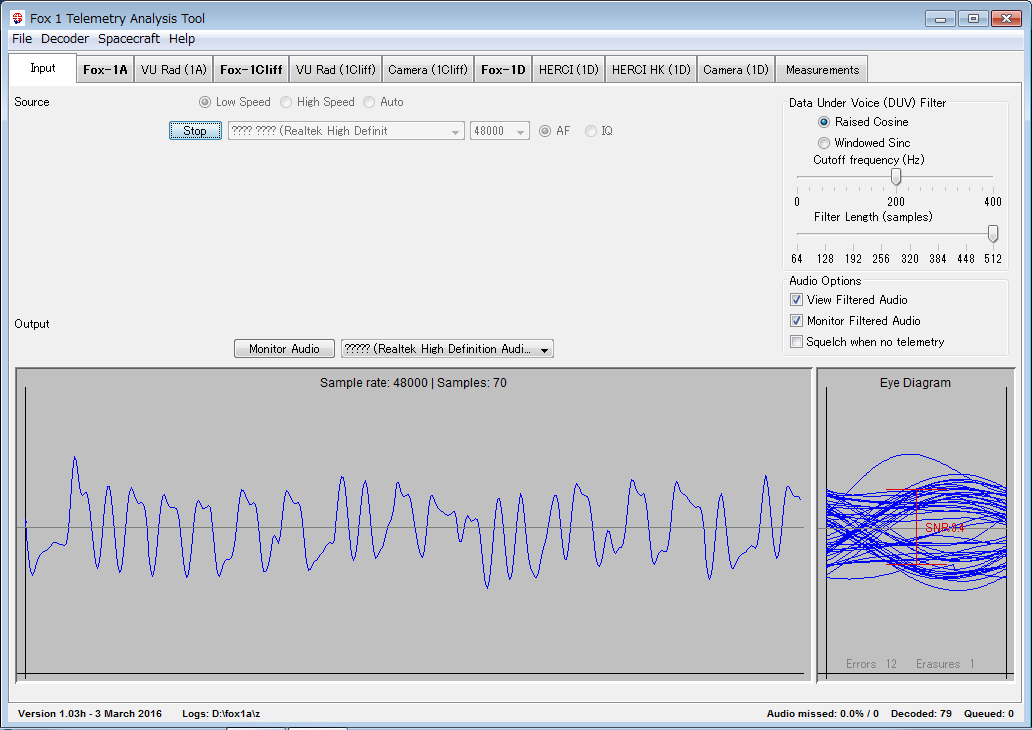 [Reference]
http://www.ne.jp/asahi/hamradio/je9pel/foxproje.htm
http://www.ne.jp/asahi/hamradio/je9pel/lightsai.htm
http://www.ne.jp/asahi/hamradio/je9pel/foxbison.htm
http://www.qsl.net/py4zbz/fox.htm
http://www.amsat.org/?page_id=4532
http://www.amsat.org/tlm/
[Reference]
http://www.ne.jp/asahi/hamradio/je9pel/foxproje.htm
http://www.ne.jp/asahi/hamradio/je9pel/lightsai.htm
http://www.ne.jp/asahi/hamradio/je9pel/foxbison.htm
http://www.qsl.net/py4zbz/fox.htm
http://www.amsat.org/?page_id=4532
http://www.amsat.org/tlm/
 Back to Top
Back to Top
 Back to Home Page
Back to Home Page



AO-85 Voice recorded - 11 Oct 2015 http://www.ne.jp/asahi/hamradio/je9pel/51011fx4.wav > Hi this is amateur radio satellite Fox-1. USB Sound Blaster installed - 25 Nov 2015 It's means to avoid the PC inside of noise at the time of reception, and purpose the good sound quality pursuit.





(1) Control Panel -> Sound Audio Device -> Sounds (2) Sound recording -> Volume -> Select, Line-In (3) Rig -> Soundmodem -> Settings (4) View of 144.660MHz 1200bps_APRS [External_SP ON] (5) Rig -> HS-Soundmodem -> Settings (6) View of 144.640MHz 9600bps_APRS [Connector Sub] (memo) UWE-3 using Line-In - 26 Nov 2015
I tried UWE-3 9k6 Line-In reception using the new Line-In input system that was introduced in the above.







AO-85 in this morning - 30 Nov 2015 06:13-06:27 JST, 30 Nov 2015, Ele 28 SW-W-N, 145.980MHz FM 21:13-21:27 UTC, 29 Nov 2015, Ele 28 SW-W-N, 145.980MHz FM In this pass, my callsign was placed on the top of the server in the fact that the most recent reception. Because the other is followed by the callsign of Japan, South America, and North America, I seen that trajectory of the satellite has been traced. The eye pattern in the bottom right of the decoder was displayed as the maximum value SNR = 7.3 and its value was sometimes displayed as SNR = 9.0.
To clear the count in the decoder, File -> Delete Payload Files If necessary, you have to copy txt_file with the contents to the another folder. (JE1CVL)





AO-85 DUV - 5 Feb 2016 10:46-11:00 UTC, 5 Feb 2016, Ele 36 WN-N-ES, 145.979MHz WFM 23:11-23:24 UTC, 18 Mar 2016, ELe 27 WN-N-ES, 145.979MHz WFM I received it using software on 5 Feb 2016, after an interval of one month. I received 31 data at once. I don't do the strange thing particularly so far. I noticed later that I might have turned off a preamplifier.

[Reference] http://www.ne.jp/asahi/hamradio/je9pel/foxproje.htm http://www.ne.jp/asahi/hamradio/je9pel/lightsai.htm http://www.ne.jp/asahi/hamradio/je9pel/foxbison.htm http://www.qsl.net/py4zbz/fox.htm http://www.amsat.org/?page_id=4532 http://www.amsat.org/tlm/